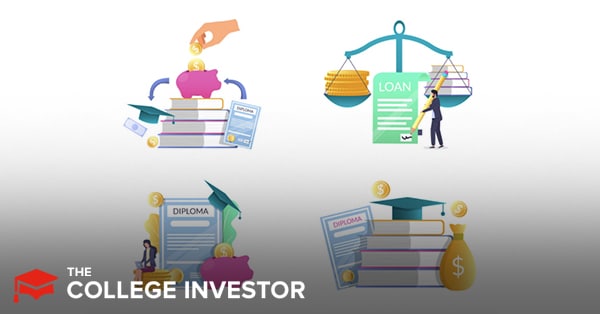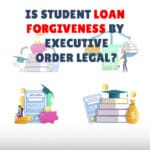
Source: The College Investor
Senators Chuck Schumer (D-NY) and Elizabeth Warren (D-MA) want President Joe Biden to forgive $50,000 in federal student loans per borrower. They claim that he can do this unilaterally through executive order.
President Biden tried to forgive $10,000 in student loan debt per borrower using executive power, but it failed at the Supreme Court. He now wants to provide debt relief using another provision - but essentially faces the same problem.
Editor's Note: The article has been updated to reflect the latest Supreme Court decision. Learn more here.
Can The President Cancel All Federal Student Loans?
The President does not have the legal authority to forgive student loans on his own. Only Congress has the power of the purse. Executive action can be used only when it has been specifically authorized by Congress.
The executive branch cannot spend money that has not been appropriated by Congress, per 31 USC 1301 et seq
(Antideficiency Act (P.L. 97-258)) and Article I, Section 7, Clause 7 of the U.S. Constitution.
The claims that the President has the authority to forgive student loans are based on a misreading of the Higher Education Act of 1965 at 20 USC 1082(a)(6). That section of the Higher Education Act of 1965 provides the U.S. Secretary of Education with the authority to:
“...modify, compromise, waive, or release any right, title, claim, lien, or demand, however acquired, including any equity or any right of redemption.”
But that quote is taken out of context. The preamble to that section of the Higher Education Act of 1965 limits this authority to operating within the scope of the statute:
“In the performance of, and with respect to, the functions, powers, and duties, vested in him by this part, the Secretary may—"
In other words, when Congress authorizes a loan forgiveness program, such as Public Service Loan Forgiveness, Teacher Loan Forgiveness or the Total and Permanent Disability Discharge, the U.S. Secretary of Education has the authority to forgive student loans as authorized under the terms of these loan forgiveness programs.
Without authorization by Congress of a specific loan forgiveness program, the President does not have the authority to forgive student loan debt. As the U.S. Supreme Court ruled in Whitman v. American Trucking Assns., Inc., (531 USC 457, 2001), Congress does not “hide elephants in mouseholes.”
In addition, the “this part” language refers to Part B of Title IV of the Higher Education Act of 1965, which applies only to loans made under the Federal Family Education Loan (FFEL) program.
There is similar language in Part E at 20 USC 1087hh for the Federal Perkins Loan program. There is no similar language for Part D for the William D. Ford Federal Direct Loan (Direct Loan) program.
The "parallel terms clause" in the Higher Education Act of 1965 at 20 USC 1087e(a)(1) (also, 20 USC 1087a(b)(2)) requires Direct Loan program loans to have the same terms and conditions as FFEL program loans. But this does not apply to the waiver authority because waiver authority is not part of the terms and conditions of the loans.
The statutory language for the waiver authority in the Higher Education Act of 1965 does not use the word "notwithstanding". This means that any other statutory or regulatory provision concerning waiver authority must apply, including the regulations mentioned in the next section. As a result, it makes alternative paths to student loan forgiveness likely to face the same fate at the Supreme Court as Biden's original plan.
More Legal Obstacles
In addition, the regulations at 31 CFR 902.2 specify the four situations in which a debt may be compromised.
So, even if the President could use an executive order to forgive student loan debt, which he cannot, these regulations will prevent the President from forgiving the student loan debt of borrowers who are able to repay their student loans within a reasonable period of time.
Federal agencies are also required by the regulations at 31 CFR 901.1(a) to “aggressively collect all debts."
What About The Payment Pause And Interest Waiver?
Didn’t President Trump use this waiver authority to implement the payment pause and interest waiver, setting a precedent that could be leveraged to forgive federal student loans?
Actually, he didn’t. The August 8, 2020 executive memorandum referred to:
"...appropriate waivers of and modifications to the requirements and conditions of economic hardship deferments described in section 455(f)(2)(D) of the Higher Education Act of 1965, as amended, 20 U.S.C. 1087e(f)(2)(D), and provide such deferments to borrowers as necessary to continue the temporary cessation of payments and the waiver of all interest on student loans held by the Department of Education until December 31, 2020.”
The executive memorandum did not specify which waivers and modifications should be used to implement the payment pause and interest waiver.
The definition of the economic hardship deferment at 20 USC 1085(o)(1)(B) allows the U.S. Secretary of Education to define new eligibility criteria. But, this isn’t necessarily sufficient, since 20 USC 1085(o)(2) requires the U.S. Secretary of Education to “consider the borrower’s income and debt-to-income ratio as primary factors” when establishing new eligibility criteria.
The regulations at 34 CFR 685.205(b)(8) provide a better solution, since the regulations allow the U.S. Secretary of Education to provide administrative forbearance because of “a national military mobilization or other local or national emergency.” However, neither the forbearances nor the economic hardship deferment allow an interest waiver.
To implement an interest waiver after the expiration of the CARES Act’s payment pause, the U.S. Secretary of Education must rely on the waiver authority in the HEROES Act of 2003 [20 USC 1098bb]. This waiver authority allows the U.S. Secretary of Education to waive or modify any provision of Title IV of the Higher Education Act of 1965 in connection with a war or other military operation or national emergency “as may be necessary to ensure that affected individuals are not placed in a worse position financially in relation to that financial assistance because of their status as affected individuals.”
The waiver authority provided by the HEROES Act of 2003 is sufficient to implement the payment pause and interest waiver, but not to forgive student loans.
Forgiving student loans goes beyond what is necessary to ensure that borrowers are in the same position financially after the national emergency as before the national emergency.
In addition, the executive memorandum specified that “This memorandum shall be implemented consistent with applicable law and subject to the availability of appropriations.” Congress has not appropriated funds for broad student loan forgiveness.
Can The President Waive The Taxes On Student Loan Forgiveness?
Editor's Note: On March 11, 2021, President Biden signed the American Recovery Act into law. This law made all loan forgiveness, for all loan types and programs, tax-free on the Federal level through December 31, 2025. This includes both Federal and private loans.
The IRS considers the cancellation of debt to be taxable income to the borrower. This is required by the Internal Revenue Code of 1986 at 26 USC 61(a)(11). It’s as though someone gave the borrower money to pay off the debt. Borrowers will receive an IRS Form 1099-C when their debt is cancelled.
Certain types of student loan forgiveness and discharge are excluded from income due to specific laws enacted by Congress.
Other types of student loan forgiveness, however, are taxable. For example, the forgiveness of the remaining debt after 20 or 25 years in an Income-Driven Repayment (IDR) plan is taxable under current law.
However, the IRS can forgive the tax debt of borrowers who are insolvent, where total debt exceeds total assets [26 USC 108(a)(1)(B) and (d)(3)]. The insolvency exclusion from income is limited to the amount of insolvency [26 USC 108(a)(3)]. Borrowers who are in an Income-Driven Repayment plan for two or more decades are likely to be insolvent, but there are no guarantees that the debt will be forgiven. Nevertheless, the IRS used similar reasoning to make the borrower defense to repayment discharge tax-free.
If broad student loan forgiveness is limited to borrowers who are experiencing economic distress, the President could ask the IRS to forgive the taxes on the loan forgiveness, arguing that the borrowers are likely to be insolvent.
Otherwise, the student loan forgiveness will be taxable unless Congress passes a specific law authorizing an exclusion from income for the loan forgiveness.
Does Student Loan Forgiveness Qualify As A Disaster Relief Payment?
Qualified disaster relief payments are excluded from income under 26 USC 139. COVID-19 qualifies as a national disaster under the Robert T. Stafford Disaster Relief and Emergency Assistance Act,
But there are only two types of qualified disaster relief payments that might apply, if you look at them sideways:
But student loans are not an expense incurred as a result of the COVID-19 pandemic and student loan forgiveness is unrelated to the pandemic.
Related Reading
If you're curious about how President Biden has forgiven student loans via executive authority to-date, check out this guide to: When Can The President Automatically Forgive Student Loans.
A few people have argued that the President may simply extend the student loan repayment pause forever. It's possible, but not likely. Here's why: Can The President Extend The Student Loan Pause Forever?
Finally, there may be a way for the Administration to create a broad student loan forgiveness program, but the action-steps to make it happen are nuanced (and not via executive order). See this: How To Potentially Implement Broad Student Loan Forgiveness.

Mark Kantrowitz is an expert on student financial aid, scholarships, 529 plans, and student loans. He has been quoted in more than 10,000 newspaper and magazine articles about college admissions and financial aid. Mark has written for the New York Times, Wall Street Journal, Washington Post, Reuters, USA Today, MarketWatch, Money Magazine, Forbes, Newsweek, and Time. You can find his work on Student Aid Policy here.
Mark is the author of five bestselling books about scholarships and financial aid and holds seven patents. Mark serves on the editorial board of the Journal of Student Financial Aid, the editorial advisory board of Bottom Line/Personal, and is a member of the board of trustees of the Center for Excellence in Education. He previously served as a member of the board of directors of the National Scholarship Providers Association. Mark has two Bachelor’s degrees in mathematics and philosophy from the Massachusetts Institute of Technology (MIT) and a Master’s degree in computer science from Carnegie Mellon University (CMU).
Editor: Robert Farrington Reviewed by: Claire Tak
